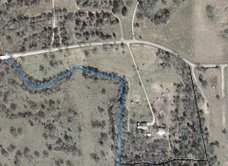We have a perfectly good chicken coop in the barn. It has its own stall right next to the tack room for convenient access. That insures that it's very easy to feed the chickens that reside in the coop. Only our chickens don't stay in the coop. Every evening, when dusk comes, the call goes out. Roosters begin crowing from the barn calling all chickens to bed. Watching, you don't see any movement directly to the barn. A peck in this direction, a scratch there. Imperceptibly the chickens SLOWLY move towards the barn. Looking for any last bit of grain, or better, a bug as a last snack before sleep. They enter the barn and the fun begins. It should be general knowledge with this country's long history of farming that chickens can fly. They don't fly well, their aim isn't all that great. Sometimes they miss their goal and end up back on the ground. But they can in fact, fly. Our barn is separated into different sections. The first section as you enter the barn is a concrete slab about 10 feet long by 15 feet wide. The slab is the floor for the tack room and the chicken coop . There's a common area for getting animals in and moving them around and putting them into the various stalls. Stalls are various sizes and are framed with pipe fences and gates. The gates vary in height from about 5 feet tall to 7 feet tall. The rafters are another 7 or 8 feet above the highest gates. One at a time, one after the other, our chickens fly up to a lower gate. From there they make the short hop to the 7 foot level. Now there is a choice. The older hens and the peahen leap from the 7 foot gate to the top of the chicken coop. Then there's the jump up to the top of the tack room. Now comes the big jump to the rafters. The younger roosters and hens show off by flapping from the top of the gates directly into the rafters. Flapping wings and squawking chickens make for a noisy barn in the afternoons. You also have to be aware of where the chickens are perched in the rafters. You don't want to be loitering in the wrong spot in the barn. There are frequent loud splatting sounds coming from the concrete.
The chicken coop does have some temporary residents. That's where our barred rock pullets are staying. There's a heat-lamp in there to keep them warm although they're old enough now that they probably don't need the lamp anymore. They are fully feathered and during the days you have to be careful where you step to avoid squishing one.
This weekend we lost our second Cornish Cross chick. We were kind of expecting this one. It was the "poopy butt" chick from a previous post. There was something wrong with this one and it was scarcely eating. It was about a quarter the size of the other chicks. In the morning it was fine and when Kristi checked them in the afternoon this one was stretched out dead and the other chicks were running back and forth over it. The chick was buried in the rain under a crepe myrtle plant.
Our Farm is 15.3 acres near Bastrop TX, with goats, chickens, cats dogs and other assorted animals. We raise gourds, herbs,flowers and a kitchen garden. We will chronicle our adventures here warts and all. Mostly warts I think.
Monday, February 28, 2005
Subscribe to:
Post Comments (Atom)




No comments:
Post a Comment